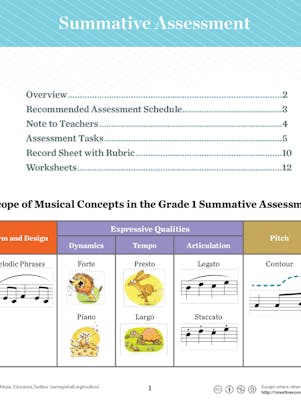Dynamics Hide and Seek
Jump to section:
Aim: How can students use their voices and dynamics as a form of identification?
Summary: Students play an identification game of hot and cold using their voices and dynamics.
Standards: US 1, 3, 4; NYC 1, 2
Grade: 1st
Concept: Dynamics
Artistic Process: Performing, Responding
Materials: classroom object for hiding (e.g., ball, stuffed animal, etc.)
Time Required: 10 minutes
Related Pages:
Instructions
- Review the definitions of forte (loud volume) and piano (quiet volume).
- Practice saying or singing a short phrase together using different volumes (e.g., “I am singing softly” sung piano).
- Have one student hide an object in the classroom while another student (the seeker) closes his or her eyes. The rest of the class should watch where the object is being hidden.
- The class helps the seeker find the object by using their voices. You may use a known song, such “Where is Thumbkin?” but replace “Thumbkin” with the name of the object. When the seeker finds the object, he/she sings “Here it is.”
- Let’s all help the seeker find the hidden object, by using our voices.
- When the seeker gets close to the object, we will sing forte.
- When the seeker gets further away from the object, we will sing piano.
Download Teacher Worksheet (PDF)
- Students take turns as the seeker and the hider.
Going Deeper
- Have students create gestures or movements to represent piano and forte (e.g., hands move close together for piano and far apart for forte). Then have the hider conduct the class using these gestures as they guide the seeker with their voices.
- Use this activity for a quick vocal assessment of pitch and singing. Assess the class as they are helping the seeker find the object, and assess the seeker as a solo voice when the object is found.
Assessments
Except where otherwise noted, this work is licensed under a Creative Commons Attribution Non-Commercial Share Alike 3.0 Unported License.


